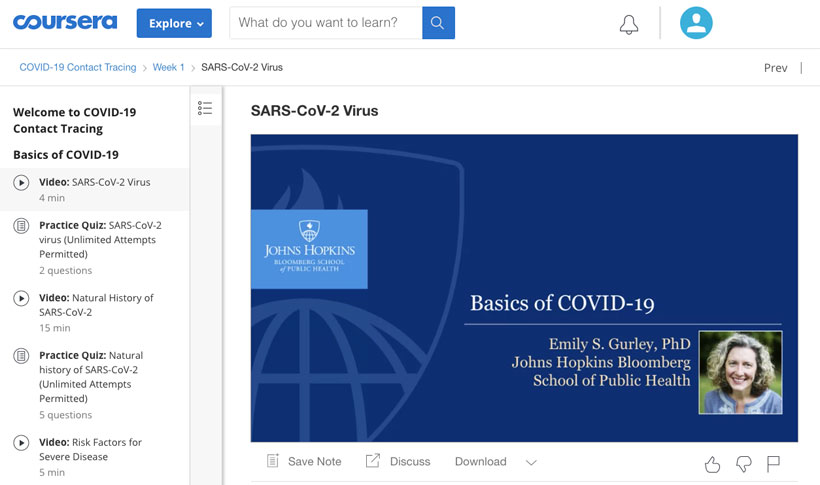IBL News | New York
The state of New York will be hiring thousands of contact tracers to fight the pandemic. Across the nation, an estimated workforce of 100,000 could be required.
These tracers in New York who will work in identifying infected persons’ contacts in order to break the chain of transmission, will be required to take and pass a free six-hours online course.
The course COVID-19 Contact Tracing, is now available on Coursera, and has been developed by the Johns Hopkins Bloomberg School of Public Health with Bloomberg Philanthropies. Within days of its release on Monday, over 35,000 had enrolled.
The certificate class taught by Emily Gurley, an infectious disease epidemiologist and an associate scientist of Johns Hopkins, teaches the basics of interviewing people diagnosed with the virus, identifying their close contacts who might have been exposed, and providing them guidance for self-quarantine for two weeks.
“Even if you stop one or two new infections, you’re preventing many new cases down the line,” explained Emily Gurley.
The course is part of an ambitious push for contact tracing backed by New York Governor Andrew Cuomo and tycoon Michael Bloomberg, who recently announced plans to develop a large-scale statewide program in New York.
The program will include a baseline of 30 contact tracers for every 100,000 residents in the state and is expected to have 6,400 to 17,000 tracers statewide depending on the projected number of cases.
“This new training course, which we’re making available online for free, will teach contact tracers how to do this work effectively—and help cities and states across the nation undertake these critical efforts,” Bloomberg said in a release.
Across the nation, an estimated workforce of 100,000 could be required to help limit the spread of COVID-19 and safely reopen the economy, according to a recent report by the Johns Hopkins Center for Health Security.
“Other communities may similarly adopt this particular course, or maybe they’ll give students a few options,” Joshua Sharfstein, Vice Dean at the Bloomberg School, said during the briefing. “Anyone in the country can now take this course and get a certificate to demonstrate that they … understand these key aspects of contact tracing.”
The contact tracing course is divided into five sections or “modules,” covering:
- Basic information on the virus and COVID-19, including symptoms of infection and how the virus is transmitted
- Fundamentals of contact tracing, such as how to define a case, identify their contacts, and calculate how long a contact should isolate;
- Steps involved in investigating cases and tracing their contacts, including simulated scenes performed by professional actors who illustrate potential interactions that tracers may experience with infected individuals and their contacts
- Ethics of contact tracing, including balancing privacy and public health considerations, and examples of basic technology tools that can facilitate contact tracings, such as using text messaging for check-ins and reminders;
- Skills for effective communications in the tracing process, such as what it means to be an “active listener” and how to deal with common challenges that arise when investigating cases.
The class includes simulations of contact tracing calls to give trainees a sense of the complex personal dynamics at play with the strategy, including in some cases a reluctance to self-quarantine for two weeks.

 En Español
En Español





















